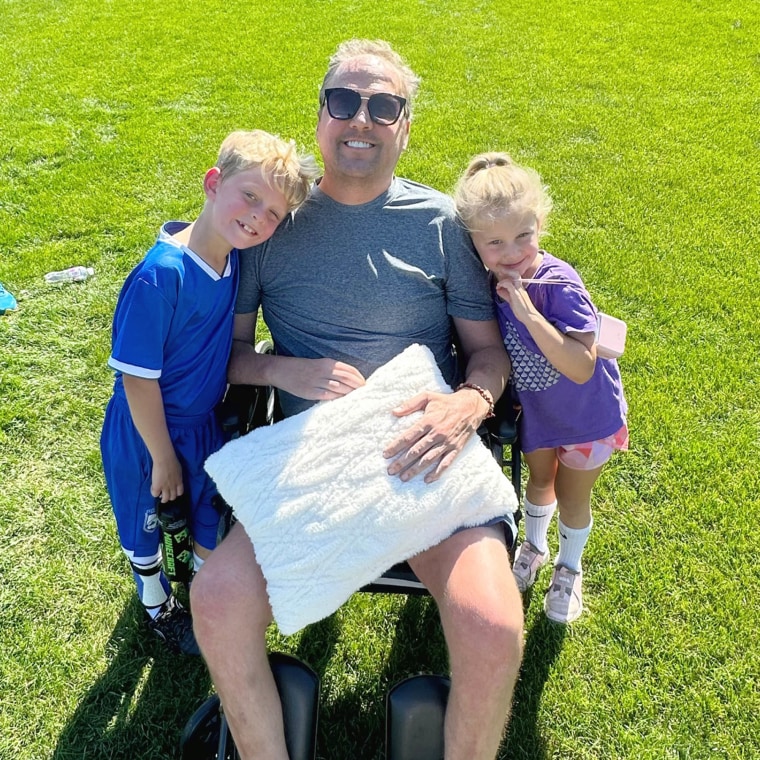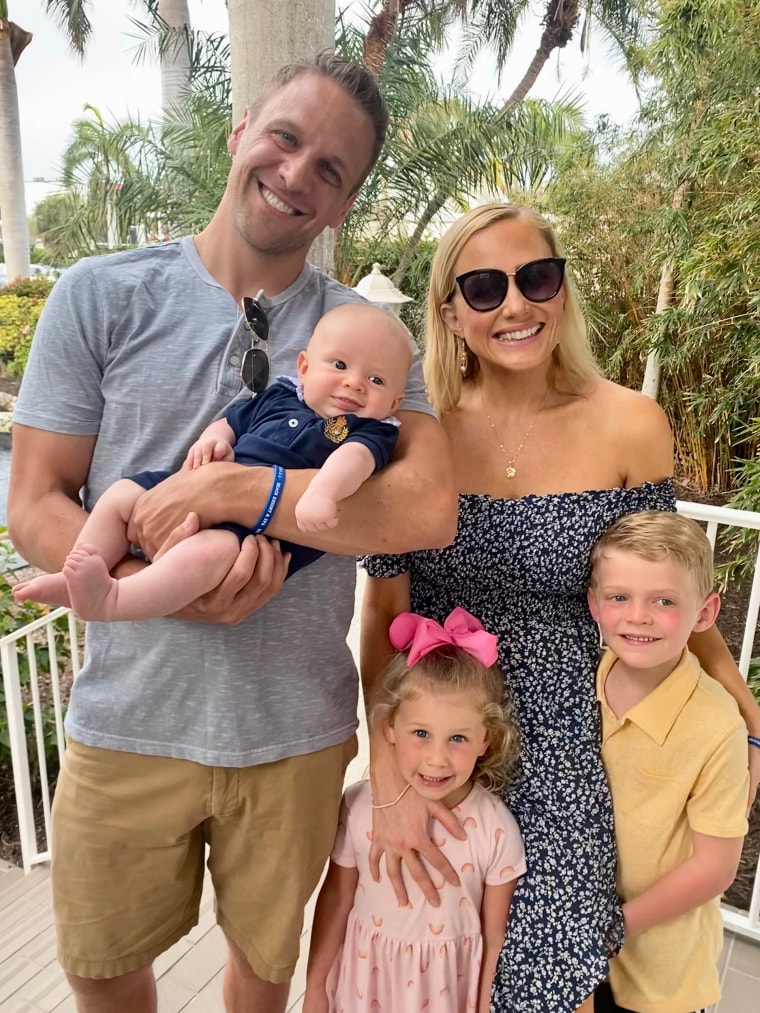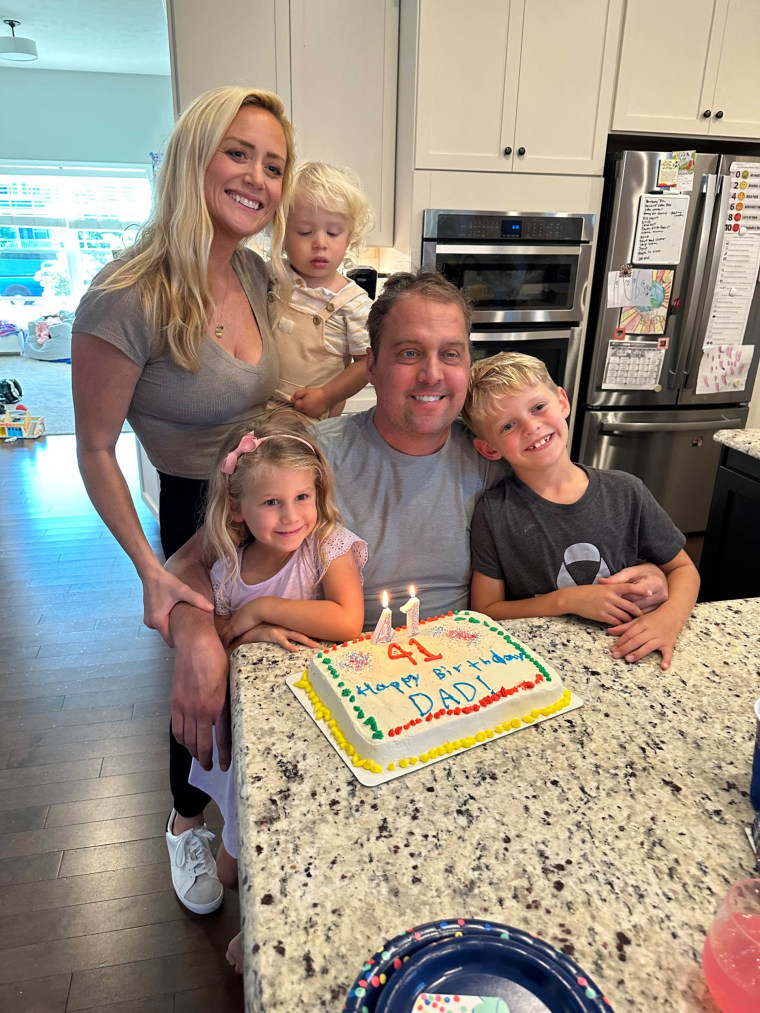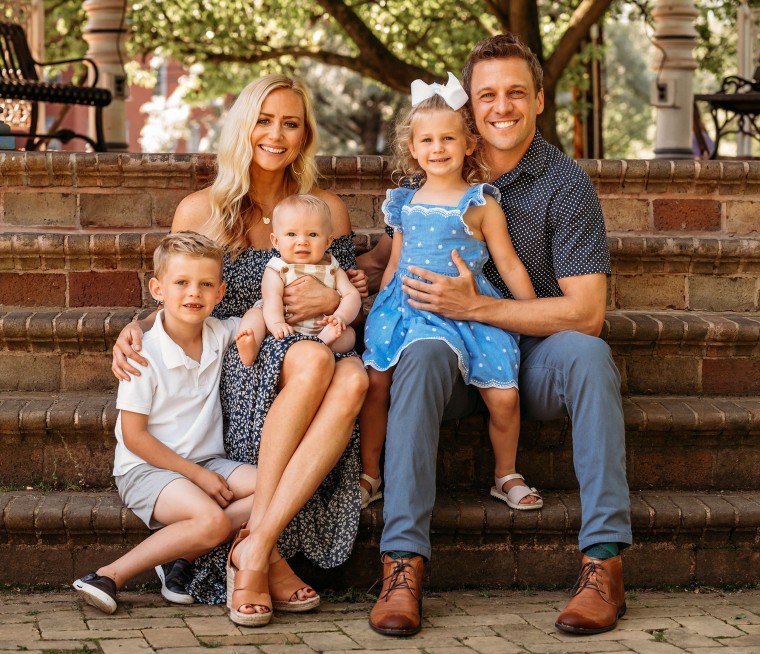Ryan Russell was a self-described “super healthy” athletic dad of three who was enjoying personal and professional success. But then the mystery headaches began.
They felt like severe migraines, he recalled. Starting in April 2022, the pattern would be similar every time: Russell, then 39, would drop his son off at school in the morning, work out and feel the pain coming on.
“About 20 minutes after leaving the gym, I would just start to get an incredible amount of pressure in my head. It would lead to these headaches and it would cause some vision issues — tunnel vision, things like that, which was just really odd,” Russell, who lives in State College, Pennsylvania, told TODAY.com in the summer of 2022.
He sought out medical advice right away, but it took three doctors to figure out what was wrong. The first thought it might be an inner ear-related or COVID-related problem. The second wanted to try a holistic approach.
Finally, the third doctor sent Russell to get an MRI. The scan showed three lesions on his brain.
The diagnosis: glioblastoma, a very aggressive form of brain cancer. More than 14,000 Americans were expected to be diagnosed with it in 2023, according to the National Brain Tumor Society.
In October 2023, Russell's wife, Samantha, said he started hospice — end-of-life care for terminally ill patients — a week after his 41st birthday and 17 months after his diagnosis.
"Our hearts are completely shattered," she tells TODAY.com.
"This is an awful, death-sentence of a disease."

What is glioblastoma?
The brain cancer can affect anyone, at any age — the cause is unknown. Symptoms include persistent headaches, nausea, double or blurred vision, and changes in mood and personality.
The disease comes with a grim prognosis: The five-year survival rate is less than 7%, the National Brain Tumor Society noted. Treatment is difficult because glioblastoma grows tentacles into the brain rather than forming a solid mass that doctors can target and remove.
“You look up what it is and that’s a pretty brutal read,” Russell said after his diagnosis. But he was determined to find all possible avenues of treatment, connecting with specialists at Duke University in North Carolina and Lenox Hill Hospital in New York.
In early May 2022, he underwent a craniotomy — surgery to remove a piece of the skull to access the brain. Doctors cut out one of the tumors, with that one chosen because its removal would have very little impact on Russell’s motor skills, language and emotion.

Trying a personalized vaccine
Russell was treated with chemotherapy and radiation, the standard of care.
He also received a personalized vaccine, for which he traveled to Europe and paid out of pocket. That regimen began in December 2022 and lasted until May 2023. Each treatment involved four shots into his abdomen.
The vaccine, made by a company in Germany, is not available in the U.S. because there haven’t been formal clinical trials in America for this particular shot, said Dr. Douglas Colkitt, a retired radiation oncologist in Sarasota, Florida, who has been consulting in Russell’s case.
It’s a form of immunotherapy: Tumors create what Colkitt called a “force field” that protects them from being destroyed by the body’s immune system, and glioblastomas have one of the fiercest “force fields.” That makes it very difficult for conventional chemotherapies to have anything but minimal benefits, he said.
The vaccine approach takes cells from the tumor itself, plus certain cells in the blood stream, to create a personalized vaccine to help the immune system conquer the “force field” and destroy the tumor naturally, Colkitt noted.
Results from German trials have been “very encouraging,” he said, citing a small study that found more than 80% of patients who received the vaccine made it to three years after diagnosis.
“There is, in my opinion, after much research, real hope for what is perhaps now the most difficult cancer in the human body to survive past a very limited window,” Colkitt said.
But the study sample was small, just over 30 patients, and U.S. clinical trials of similar vaccines have been less encouraging, he noted.
Tumor vaccines for glioblastoma remain experimental, said Dr. Evanthia Galanis, an oncologist at the Mayo Clinic's Brain Tumor Program in Rochester, Minnesota. They're available in the U.S. as part of clinical trials, but haven't met the efficacy threshold necessary for wider availability, she added.
Progress in treating glioblastoma has been "very slow," with only one drug and one device approved in the U.S. in the last 15 years, Galanis said.

Aggressive new tumors appear
Still, Russell said he was excited and very hopeful about the treatment.
He was able to stay in relatively good health for a while, with some side effects, most noticeably aphasia — where he knows what he wants to say, but has trouble getting the words out.
In June 2023, he began experiencing numbness on most of his right side, and an MRI showed two new tumors on his brain that were more aggressive than "the main stable tumor he has had all this time," his wife wrote in a blog that documents their journey.
Another brain surgery followed to remove almost all of the new tumors. But shortly after he returned home from the hospital, his health started to deteriorate quickly, his wife says.
He entered hospice in October 2023.
“Doctors said there was nothing more that could be done. We’d exhausted all treatment options,” Samantha Russell adds.
"So we went home and have tried to enjoy our time together as a family of five as much as possible. Lots of time to cuddle, snuggle, look at old pictures and tell stories."
The dad, an associate professor of graphic design at Penn State University, has been able to finish a children's book titled "My Annoying, Irritating, Always-in-the-way Shadow," a project he began when he found out about his brain cancer.
Russell always dreamed of becoming a published author, his wife notes.
"I’m just so proud that Ryan was able to take his sorrow and make something wonderful come out of it," she says.

The couple has been open with their three children about his diagnosis, though they don’t call the disease “cancer,” and have emphasized they’re going to deal with it as a family.
After his diagnosis, Russell was determined to focus on the big picture.
“I’ve had the real luxury of being very successful in my life… (but) I was always someone who was thinking about the next thing, and never celebrating, never enjoying what I was doing. And what this diagnosis gave me the opportunity to do was just re-prioritize and really start to think about: What is it that I want to do?” he said in 2022.
“No more putting off till tomorrow because we don’t know what tomorrow is.”

